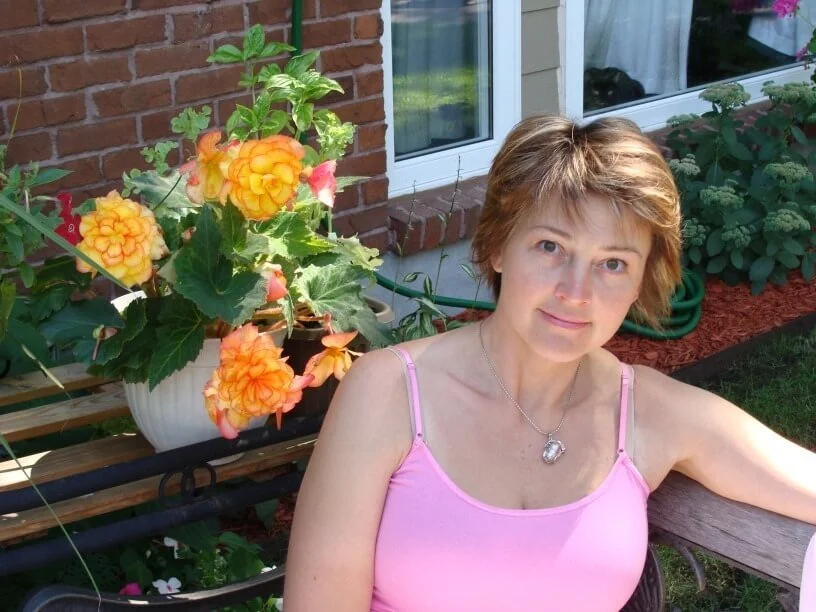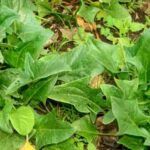Container gardening vegetables have gained tremendous popularity in recent years, as more people embrace the joys of growing their own food regardless of space limitations. This method of gardening offers a range of benefits that make it an attractive option for both novice and experienced gardeners alike.
Not only does container gardening provide a practical solution for those with limited outdoor spaces, it also allows for greater control over soil quality, pest management, and climate conditions. In this article, we will explore the advantages and benefits of container gardening for growing vegetables, empowering you to create your own thriving garden right at home.
The appeal of container gardening vegetables lies in its versatility and accessibility. Whether you live in an apartment with a small balcony or have a spacious backyard, containers can be easily adapted to suit any available space.
No longer limited by traditional garden plots, anyone with access to sunlight can enjoy the satisfaction of cultivating fresh and organic vegetables just steps away from their kitchen. Furthermore, containers provide greater flexibility in controlling soil composition and pH levels, ensuring optimal conditions for specific vegetable varieties.
In addition to the convenience and adaptability, container gardening offers several other advantages that make it an appealing choice for vegetable cultivation. By utilizing containers, you can achieve better pest control since elevation can help deter ground-dwelling pests such as slugs or snails.
Containers also allow for easier weed management since they create a clear boundary between cultivated plants and surrounding areas. Moreover, container-grown vegetables tend to experience fewer soil-borne diseases compared to those grown directly in the ground due to improved drainage and reduced risk of contamination.
Overall, container gardening vegetables presents a myriad of benefits that enable individuals from all walks of life to engage in the rewarding practice of growing their own food. Whether you are new to gardening or a seasoned enthusiast looking to expand your cultivation efforts, this article will guide you through every step of the way – from selecting suitable containers and vegetable varieties to soil preparation, care, and maintenance.
So let’s dive in and uncover the secrets to successful container gardening that will yield a bountiful harvest right at your fingertips.
Choosing the Right Containers for Vegetable Gardening
When it comes to container gardening vegetables, selecting the right containers is crucial for the success of your plants. By choosing containers that provide the ideal conditions for your vegetables, you can create a thriving garden in even the most limited spaces. In this section, we will discuss the various considerations when choosing containers for vegetable gardening.
Types of Containers
There are several types of containers that are suitable for growing vegetables. Traditional options include clay pots, plastic nursery pots, and wooden boxes. Each has its advantages and drawbacks, so it’s important to consider factors such as durability, insulation, and weight before making a decision. Additionally, fabric containers have gained popularity due to their flexibility and ability to promote healthy root growth.
Size, Material, and Drainage
When it comes to container size, larger is generally better, as it provides more root space for your vegetables to grow. However, consider both the size of your plants at maturity and the space where you plan to keep your containers. Balconies or smaller outdoor areas may require smaller containers that can fit comfortably in tight spaces.
The material of your container also plays a role in maintaining optimal growing conditions. For example, terracotta or clay pots tend to dry out faster than plastic ones due to their porosity. Plastic pots retain moisture better but may not provide adequate drainage unless holes are drilled in the bottom. Self-watering containers are also an option if you prefer a more hands-off approach to watering.
Creative Options
Container gardening gives you plenty of room for creativity in selecting your planters. Consider repurposing old buckets or barrels into spacious planters that add character to your space. Vertical gardening is another creative option that utilizes vertical space by planting vegetables on wall-mounted shelves or hanging baskets.
No matter what type of container you choose, ensure that it is clean and free of any chemicals or residues that could harm your plants. By selecting the right containers for your vegetable gardening, you can provide the optimal growing environment for your plants to thrive.
Selecting the Best Vegetable Varieties for Container Gardening
When it comes to container gardening vegetables, selecting the right vegetable varieties is crucial for success. Not all vegetables are suitable for growing in containers, so it’s important to choose varieties that are well-suited for the limited space and specific conditions container gardening provides. Here are some tips on selecting the best vegetable varieties for your container garden:
- Consider the Size: Since containers have a limited amount of soil, it’s important to choose vegetable varieties that are compact and don’t take up too much space. Look for dwarf or bush varieties of vegetables such as tomatoes, peppers, and cucumbers. These plants have been specifically bred to grow in smaller spaces and will thrive in containers.
- Check the Growth Habit: Another factor to consider is the growth habit of the vegetable variety. Some vegetables, like vining plants or those with sprawling growth habits, may not be suitable for containers unless you provide proper support or trellising. Opt for determinate tomato varieties instead of indeterminate ones, which tend to be more compact and manageable.
- Look for Fast-Maturing Varieties: Since containers have limited soil volume, it’s best to choose vegetable varieties that mature quickly. This way, you can enjoy a bountiful harvest within a shorter period of time. Look for early-maturing varieties of lettuce, radishes, spinach, and other leafy greens.
- 4.Try Unique or Uncommon Vegetables: Container gardening opens up possibilities to grow unique or uncommon vegetables that you might not find at your local grocery store. Consider trying out miniature eggplants, baby carrots in different colors, or even exotic herbs like Thai basil or lemon grass.
By taking these factors into consideration when selecting vegetable varieties for your container garden, you’ll be setting yourself up for a successful and abundant harvest. Remember to also check seed catalogs or consult with local nurseries who specialize in edible plants, as they can provide recommendations based on your specific climate and container gardening conditions.
Preparing the Soil and Planting Techniques for Container Gardening
When it comes to container gardening, the proper preparation of soil is essential for the success of your vegetable plants. Container-grown vegetables rely on the nutrients found in the soil you provide, as they are unable to seek out additional nourishment from surrounding areas like their counterparts in traditional gardens. Therefore, it is crucial to ensure that your chosen soil is well-balanced and nutrient-rich.
For container gardening, it is ideal to use a high-quality potting mix or a blend specifically formulated for vegetables. These mixes are designed to provide proper drainage while retaining moisture and containing essential nutrients. Avoid using regular garden soil, as it tends to compact easily and drain poorly when used in confined spaces like containers.
To prepare the soil for planting in containers, follow these step-by-step instructions:
- Start by filling your chosen container up to about two-thirds full with the potting mix.
- Moisten the mix thoroughly without making it waterlogged.
- Ensure that there are adequate drainage holes at the bottom of your container.
- Place a layer of gravel or broken pottery shards over these holes to prevent them from becoming blocked by excess soil.
- Add the remaining potting mix until it reaches within an inch or so from the rim of the container.
Once you have prepared the soil in your containers, you can proceed with planting your vegetable seeds or seedlings:
- If planting seeds, carefully read the instructions on each seed packet regarding depth and spacing requirements.
- Use a finger or small tool to create shallow holes in the soil according to these guidelines.
- Place one or two seeds into each hole and cover them lightly with soil.
- Gently press down on top of the soil covering each seed to ensure good contact between seed and moist soil.
- If planting seedlings, gently loosen their root systems before placing them into prepared holes at the same depth as they were previously planted.
- Fill in around the seedlings with additional potting mix, firming it gently around the base of each plant.
By following these soil preparation and planting techniques, you will give your container garden vegetables the best start for growth and development. Remember to provide adequate water and sunlight as necessary, and your vegetable plants will thrive in their confined but nurturing environment.
| Container Gardening Tips | Benefits |
|---|---|
| Use a high-quality potting mix or blend specifically formulated for vegetables. | – Provides proper drainage
|
| Avoid using regular garden soil. | – Compacts easily
|
| Create adequate drainage holes at the bottom of the container. | – Prevents excess soil from blocking drainage holes |
Essential Care and Maintenance for Container Garden Vegetables
Caring for container garden vegetables is crucial to ensure their healthy growth and bountiful harvest. Proper care and maintenance help meet the specific needs of plants grown in containers, maximizing their potential for growth and productivity. This section provides essential tips on watering, fertilizing, providing adequate sunlight, and preventing common issues that may arise in container gardening.
One of the most important aspects of caring for container garden vegetables is watering. Since containers have limited soil volume, they tend to dry out more quickly than traditional garden beds. It is essential to maintain consistent moisture levels without overwatering or allowing the soil to become waterlogged.
To ensure proper watering, it is recommended to check the moisture level by inserting a finger around an inch into the soil. If it feels dry at that depth, it’s time to water.
In addition to proper watering, fertilizing container vegetables is vital for their nutrition requirements. Container-grown plants heavily rely on the nutrients provided through the potting mix since they cannot access nutrients from surrounding soil like garden plants do. It is advisable to use a balanced, slow-release fertilizer specifically formulated for vegetable gardening.
Application rates should follow package instructions but are typically based on plant size or volume of potting mix in the container. Regular feeding throughout the growing season helps ensure continuous nutrient supply for healthy growth and abundant yields.
Another key element in maintaining healthy container garden vegetables is providing adequate sunlight. Most vegetable plants require at least six hours of direct sunlight per day to thrive and produce optimal yields.
Therefore, placing containers in locations with ample sun exposure is crucial for successful growth and productivity. If outdoor space constraints limit sun exposure options, consider using movable containers that can be easily repositioned throughout the day or utilizing reflective materials like mirrors or white surfaces to redirect sunlight onto plants.
To prevent common issues such as pests, diseases, and nutrient deficiencies in container gardens, there are several preventative measures one can take. Regularly inspect leaves and plants for signs of pests or diseases and take immediate action to address any issues. Applying organic insecticidal soaps, using physical barriers like row covers, or releasing beneficial insects can help control pest populations.
Additionally, practicing crop rotation and using disease-resistant varieties can reduce the risk of diseases. Regularly monitoring nutrient levels in the soil and addressing any deficiencies through targeted fertilization also help maintain healthy plants.
By following these essential care and maintenance practices, container gardeners can provide their vegetables with optimal growing conditions and increase their chances of success. Taking such steps will ensure that plants receive their necessary moisture, nutrients, sunlight, and protection from common issues. Implementing proper care and maintenance will result in thriving container garden vegetables that produce delicious harvests throughout the season.
Maximizing Yield and Harvest in Container Vegetable Gardening
Techniques for Maximizing Productivity
Container gardening allows for precise control over growing conditions, which can be advantageous in maximizing the yield and harvest of vegetables. Here are some techniques to maximize the productivity of your container garden:
- Proper Spacing: Pay attention to the recommended spacing requirements for each vegetable variety. Overcrowding can lead to competition for resources and smaller yields. Be sure to follow spacing guidelines when planting your vegetables in containers.
- Pruning: Regular pruning can help promote healthy growth, reduce disease risk, and increase yield. Remove dead or damaged leaves, as well as any branches that are competing for space or sunlight. This will focus resources on producing more fruits or vegetables.
- Support Systems: Some vegetable plants require support to prevent sprawling or bending under their own weight. Install trellises, stakes, or cages in your containers to provide support for vining plants like tomatoes, cucumbers, or beans. This will allow them to grow upright and maximize fruit production.
Extending the Growing Season
One of the advantages of container gardening is the ability to extend the growing season by moving containers indoors or providing additional protection against frost and cold temperatures.
- Indoor Gardening: When temperatures drop in colder climates, consider bringing your container garden indoors near a sunny window or under grow lights. This allows you to continue growing vegetables throughout the year, regardless of outdoor conditions.
- Cold Frames and Cloches: Use cold frames or cloches to create microclimates that protect your container plants from frost and chilly winds. These structures act as mini greenhouses by trapping heat from sunlight and extending the growing season.
Succession Planting
Succession planting involves planting new crops at regular intervals throughout the growing season to ensure a continuous harvest.
- Planning Ahead: Before starting your container garden, research the maturity dates of your chosen vegetable varieties. This information will help you plan when to plant subsequent batches to ensure a steady supply of fresh vegetables.
- Staggered Planting: After harvesting one round of vegetables, replant the container with a new batch. Sow seeds or transplant seedlings about one to two weeks apart to allow each batch to mature at different times. This method ensures a continuous harvest over an extended period.
By applying these techniques and considering the specific needs of your vegetable varieties, you can maximize the yield and harvest in your container vegetable garden. Experiment with different strategies and observe which methods work best for your unique gardening conditions.
Creative Ideas for Container Garden Vegetable Arrangements
Container gardening offers endless possibilities for creative and unique arrangements of vegetables. With a little bit of imagination, you can transform your container garden into a visually stunning and productive space. Here are some creative ideas to inspire you:
- Vertical Gardening: Utilizing vertical space is an excellent way to maximize the potential of your container garden. Consider using trellises, stakes, or cages to support climbing vegetables such as tomatoes, cucumbers, or peas. Not only does this save valuable ground space, but it also adds height and interest to your garden.
- Companion Planting: Take advantage of companion planting by combining different vegetables in the same container. For example, plant lettuce alongside radishes or spinach alongside carrots. These combinations not only complement each other in terms of growth requirements but also create contrast and variety in your container garden.
- Incorporating Flowers: Adding flowers to your container garden not only enhances its aesthetic appeal but can also attract beneficial pollinators and deter pests. Choose flowers that thrive in containers and have similar sunlight and watering requirements as your vegetables. Marigolds, calendula, nasturtiums, and pansies are popular choices for companion planting with vegetables.
- Colorful Containers: Don’t limit yourself to traditional pots for your vegetable garden; explore alternative options that add color and personality to your space. Try repurposing old buckets, barrels, crates, or even colorful ceramic planters for a unique touch.
- Theme Gardens: Embrace creativity by designing theme gardens within your containers. Create a salsa garden by growing tomatoes, peppers, onions, cilantro, and garlic chives together in a large planter. Or go for an Italian-inspired garden with basil, oregano, cherry tomatoes, and bell peppers.
Remember to consider the specific growth requirements of the vegetables you choose when arranging them in containers. Ensure they have enough space for root development and provide adequate support if necessary. Experimenting with different arrangements and combinations will not only make your container garden visually appealing but also encourage healthy growth and productivity.
By thinking outside the box and utilizing these creative ideas, you can turn your container garden into a stunning focal point that showcases the beauty of both vegetables and flowers. Don’t be afraid to try new things, mix and match different varieties, and let your imagination run wild in designing your container garden.
Troubleshooting Common Issues in Container Vegetable Gardening
One of the challenges that container vegetable gardeners may face is overwatering. It can be easy to accidentally overwater plants in containers, as the excess water does not have anywhere to go and can lead to root rot. To avoid this issue, it is important to ensure that your containers have proper drainage.
Choose pots with drainage holes at the bottom or create your own by drilling holes in the bottom of the container. Additionally, you can place a layer of rocks or gravel at the bottom of the pot before adding soil to help improve drainage.
Another common issue in container vegetable gardening is poor drainage due to compacted soil. Over time, the soil in containers can become compacted, preventing water from draining properly and causing root suffocation. To prevent this problem, it is recommended to regularly check and improve soil drainage.
You can do this by periodically loosening the soil using a small hand trowel or garden fork, ensuring that water is able to flow freely through the pot. If necessary, incorporate organic matter such as compost or perlite into the soil mix to help improve drainage.
Limited space is often a concern for container gardeners, especially those who are living in apartments or urban areas with limited outdoor space. However, there are several solutions for maximizing space and still enjoying a bountiful harvest from your container garden. Vertical gardening is a great option for utilizing vertical space effectively. This technique involves growing plants vertically on trellises or using hanging baskets to save horizontal space and provide support for vining vegetables like tomatoes or cucumbers.
Conclusion
In conclusion, container gardening vegetables offers numerous benefits and advantages that make it an appealing option for both experienced gardeners and beginners alike. The convenience and versatility of container gardening allow individuals to grow their own vegetables even in limited spaces or urban environments, making it a popular choice among those with small gardens or no outdoor space at all.
One of the main advantages of container gardening vegetables is the ability to select the perfect containers for specific vegetable varieties. By choosing the right size, material, and providing proper drainage, gardeners can create an ideal growing environment for their plants. Additionally, the creative options offered by container gardening, such as repurposed containers or vertical gardening, add an element of innovation and aesthetic appeal to any garden.
Furthermore, container gardening allows for a wide variety of vegetable options. From herbs and leafy greens to root vegetables and even fruiting plants like tomatoes or peppers, there are numerous vegetable varieties that thrive in containers. By considering factors such as plant height, spread, and root depth when selecting suitable vegetable varieties for containers, gardeners can ensure successful growth and abundant harvests.

If you’re looking to get into vegetable gardening, or are just looking for some tips on how to make your current garden better, then you’ve come to the right place! My name is Ethel and I have been gardening for years. In this blog, I’m going to share with you some of my best tips on how to create a successful vegetable garden.





